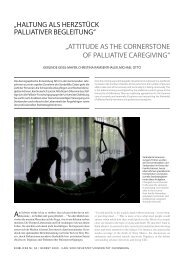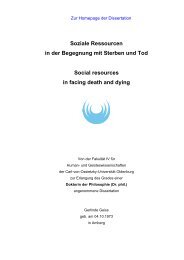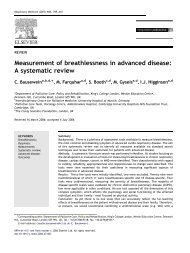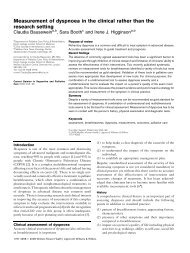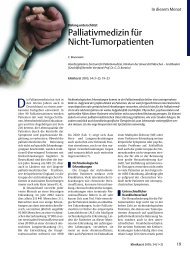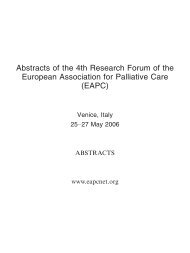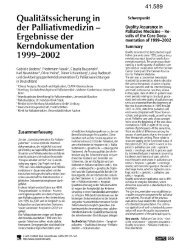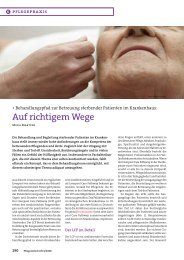EAPC - ipac
EAPC - ipac
EAPC - ipac
Create successful ePaper yourself
Turn your PDF publications into a flip-book with our unique Google optimized e-Paper software.
422 <strong>EAPC</strong> Abstracts<br />
minor patient has the right to know the prognosis. Conclusions: Secondary<br />
school students find NTD and APS-requests by minors more acceptable<br />
than euthanasia. Acceptability of ELD-requests varies with case characteristics,<br />
with greater support in terminal situations with irreversible pain.<br />
76 Oral Presentation<br />
Ethics<br />
Reporting of euthanasia and labeling of end-of-life practices: a<br />
study of hypothetical cases<br />
Authors: Hilde Buiting Department of Public Health Erasmus Medical<br />
Center NETHERLANDS<br />
Hans van Delden University Medical Center Utrecht, Julius Center for<br />
Health Sciences Utrecht NETHERLANDS<br />
Paul van der Maas Erasmus MC, Department of Public Health Rotterdam<br />
NETHERLANDS<br />
Bregje Onwuteaka-Philipsen Vrije Universiteit Medical Center Amsterdam<br />
NETHERLANDS<br />
Agnes van der Heide Erasmus MC, Department of Public Health Rotterdam<br />
NETHERLANDS<br />
Judith Rietjens Erasmus MC, Department of Public Health Rotterdam<br />
NETHERLANDS<br />
Background: In the Netherlands, euthanasia is defined as the deliberate<br />
ending of life at the patient’s request. Physicians are required to report<br />
euthanasia to judicial authorities in order to increase transparency and public<br />
control. However, distinguishing between euthanasia and alleviation of<br />
symptoms with hastening of death as a potential side effect, is sometimes<br />
difficult. We examined which characteristics are associated with physicians’<br />
willingness to report and the factors that contribute to physicians’<br />
labeling as euthanasia or ending of life. Methods: Design Random stratified<br />
sample of physicians (n=2100, response: 56%) Methods Physicians<br />
received a questionnaire that randomly presented three cases out of 47 and<br />
varied according to (1) type of medication, (2) physician’s intention, (3) the<br />
kind of patient request, (4) patient’s life expectancy and (4) the time until<br />
death. They were asked whether they would report this death and which<br />
term would describe the act in the presented case best. We applied a logistic<br />
regression analysis to assess the relative importance of each factor for<br />
the physicians’ choice. Results: Physicians were most willing to report<br />
cases that they labeled as euthanasia or ending of life. The factors that contributed<br />
most to physicians’ labeling as euthanasia or ending of life were the<br />
administration of muscle relaxants (OR for comparison with proportional<br />
morphine=326, p



